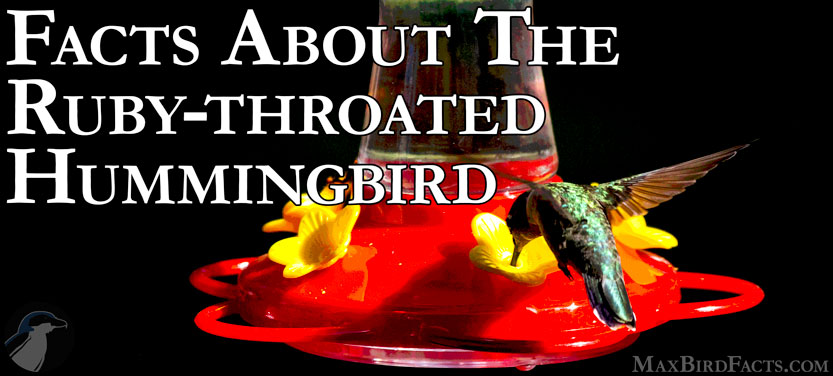The Ruby-throated Hummingbird (Archilochus colubris) is a staggeringly beautiful bird. The iridescent red throat patch of the male bird and shimmering emerald bodies of both male and female hummingbirds always catch the light just right.
In this article, I will share with you 15 facts about the Ruby-throated Hummingbird. I hope some of these are ones you’ve never heard of before, so without further adieu, let’s dive in.
1. The Ruby-throated Hummingbird’s original scientific name was Trochilus colubris, and it was introduced in 1758 by the father of taxonomy, Carl Linnaeus.
This original name comes from the Latin Trochilus, meaning hummingbird, and Spanish colubris, translating to hummingbird. However, Ludwig Reichenbach changed this tiny bird’s name in 1854 to its current form, Archilochus colubris.
This might not seem important, but I think it beautifully shows how what we perceive as fact in science today could completely change in the future. Therefore, the Ruby-throated Hummingbird’s current name stems from the Greek Archilochus, a poet in the 7th century BC, and the same species name, colubris, the Spanish word for “hummingbird.”
2. Ruby-throated Hummingbirds undertake an astonishing non-stop over 500-mile night flight over the Gulf of Mexico during their migrations.
This flight takes under 20 hours, and the hummingbirds cannot rest in the sea since their feathers aren’t waterproofed. 95% of these little gems have to travel over the gulf twice a year for their lives. Most Ruby-throated Hummingbirds spend the breeding season on the East Coast to the Mississippi River and then migrate to Mexico and Central America before winter’s chill.
3. Ruby-throated Hummingbirds weigh only 3 grams, the same as a US Penny.
Humor me for one moment, and please fish a penny out of your wallet, purse, change jar, or wherever you stash your coins. Now, imagine a bird that weighs as much as that copper-plated zinc disk flying a distance of 8,800 football fields without stopping.
I’m doing this while writing this article, and I have difficulty comprehending how such a tiny bird could travel such an immense distance all in one shot.
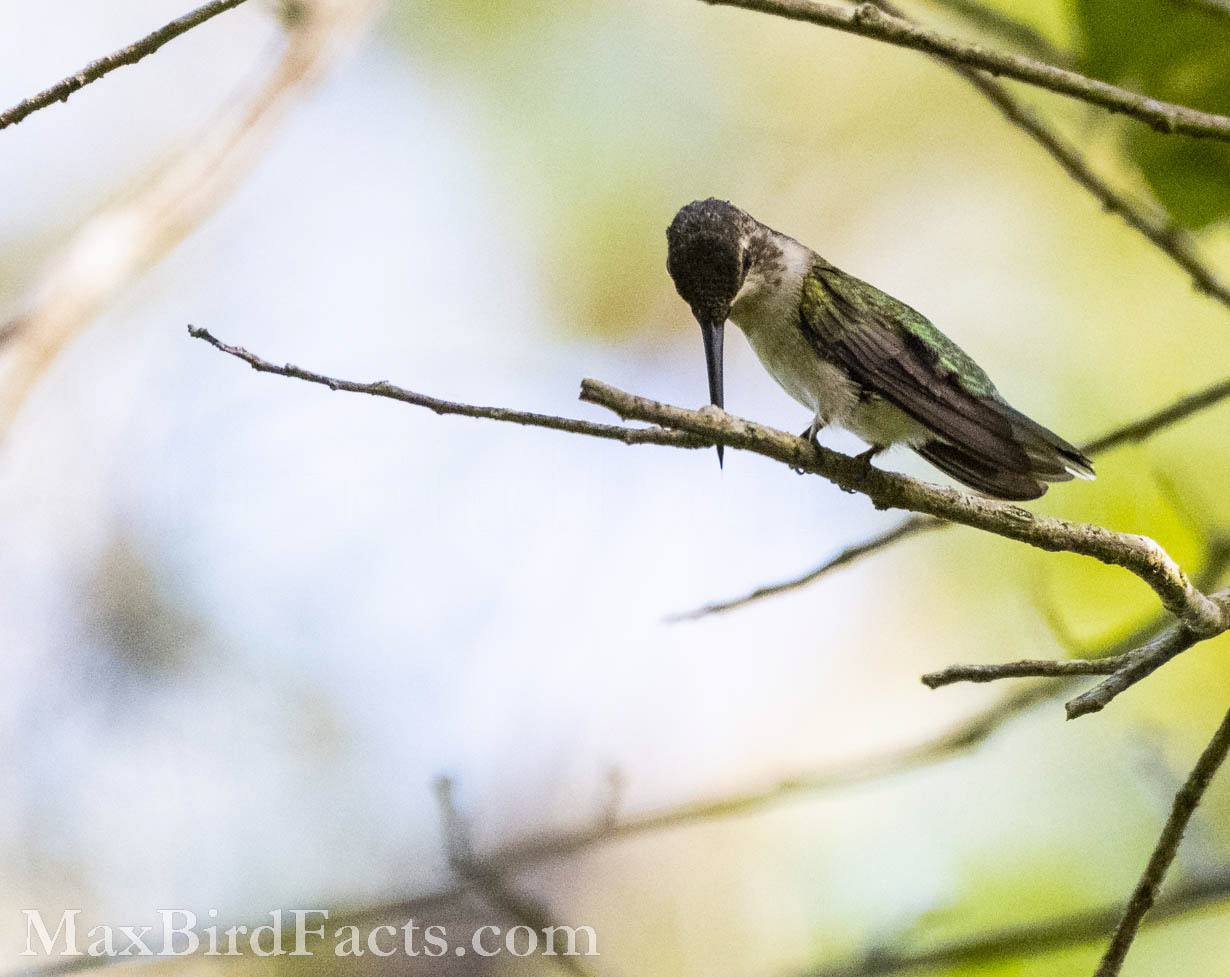
4. Ruby-throated Hummingbirds are the most prolific hummingbird in North America.
There are an estimated 20 million Ruby-throated Hummingbirds in the United States during the peak of their breeding season (March to July). During their breeding season, Ruby-throated Hummingbirds range the entire east coast of North America and west to the edge of the Great Plains.
These little birds are the only regular hummingbird in the Eastern US. Still, we are occasionally blessed with the occasional vagrant Broad-billed or Rufous Hummingbirds to spice up the feeders.
5. Ruby-throated Hummingbirds have a wingspan of about 3.7 inches and a length from bill tip to tail of 3.2 inches.
To match their tiny mass, hummingbirds are the smallest birds on Earth. Still, their little wings can produce more than enough thrust to propel them hundreds of miles over dark seas.
If you want to visualize the size of this bird in your hands, grab a credit card from your wallet. The standard length of a credit or identification card is 3.375 inches, and it weighs 5 grams, two heavier than the bird we are discussing.
6. Ruby-throated Hummingbirds beat their wings 53 times per second while flying.
This insane speed is how hummingbirds earned their unique name. The rate of the hummingbird’s wing flaps creates the humming frequency we hear. This humming sound comes from the motion of the birds flapping their wings.
When a Ruby-throated Hummingbird flies, it doesn’t conduct the typical up-and-down movement of wing stroke like other birds. Instead, hummingbirds move their wings in a figure-of-eight motion to hold their position in the air by simultaneously producing upward and downward force.
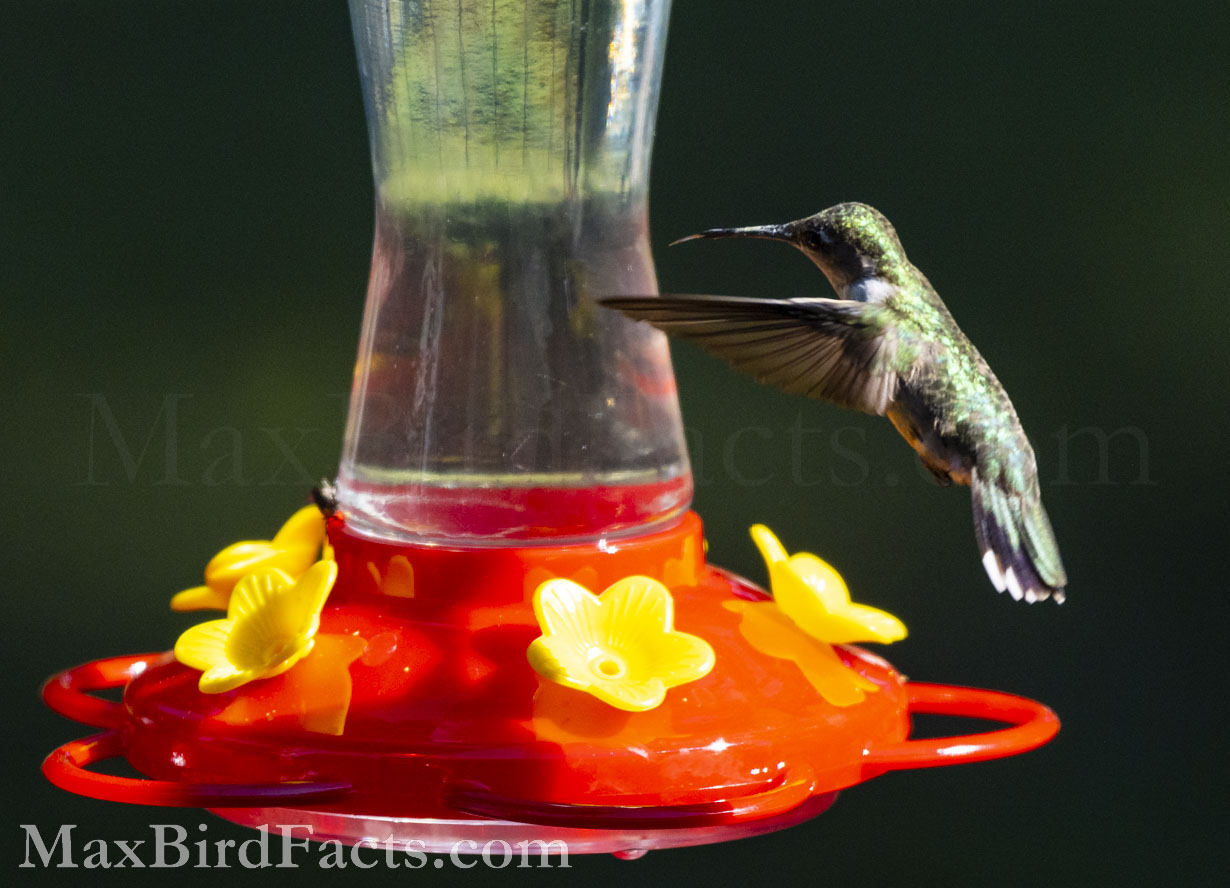
7. Ruby-throated Hummingbirds fly at speeds averaging 30 miles per hour.
Hummingbirds are some of the fastest birds in every respect. They match the top speeds of birds as large as the Bald Eagle, over 1,150 times heavier and 10 times larger than the Ruby-throated Hummingbird. This is an incredible feat of evolution to produce a bird so small but still so exceptionally speedy.
If we were to scale a Ruby-throated Hummingbird to the size of a Bald Eagle, that bird would theoretically fly 300 miles per hour! However, this wouldn’t be possible, and multiplying the size difference between the eagle and hummingbird with its flight speed doesn’t consider the effects of gravity and drag on the larger size of the scaled bird.
8. Ruby-throated Hummingbirds go into a state of torpor when they sleep.
Torpor is a state where the bird lowers its metabolic rate and body temperature to conserve energy. Once in torpor, a Ruby-throated Hummingbird’s core temperature will drop from 103°F down to 70°F, and its metabolism will decrease over 90% its daytime rate. If the hummingbird didn’t enter torpor during its sleeping hours, its metabolism would burn through its energy and fat reserves, starving the bird in its sleep. However, coming out of this near-dead state can sometimes be troublesome.
On cold mornings, some Ruby-throated Hummingbirds can take a while to warm up enough to take flight. This isn’t necessarily harmful to the bird but makes it more susceptible to predators. So, if you ever see a hummingbird sitting suspiciously still in the morning, give it plenty of space, so you don’t frighten it.

9. Ruby-throated Hummingbirds have the fastest metabolism of any animal.
If you break into a full sprint, your heart rate would be around 100 to 120 beats per minute, and you would be breathing about 50 breaths per minute. Contrast this to a Ruby-throated Hummingbird whose heart pumps at 1,260 bpm and puffs at 250 breaths per minute. All these numbers mean a hummingbird’s metabolism is roughly ten times faster than ours.
Because of this, Ruby-throated Hummingbirds have to drink sugary flower nectar every ten to fifteen minutes to keep up with their metabolic needs. Further, before their odyssey over the Gulf, Ruby-throated Hummingbirds have to double their weight in fat to have enough stored energy to make the journey. To do this, these little birds have to consume twice their weight in nectar and insects every day for the weeks leading up to their migration.
10. The male Ruby-throated Hummingbird’s radiant red throat patch is called a gorget.
The gorget is a very fitting name for this patch of sparkling feathers. Historically, the gorget was a piece of armor worn around the throat and upper chest to protect the user’s windpipe in battle. Later, once firearms replaced bolts and arrows, the gorget became a more ceremonial piece of armor and was ornately decorated to show off the status of its wearer.
This couldn’t be a more perfect description for our Ruby-throated Hummingbird’s stunning throat patch. This area of iridescent red feathers is a way for male Ruby-throated Hummingbirds to attract females and deter rival males. The more brilliant his gorget is, the better his chances for either are.
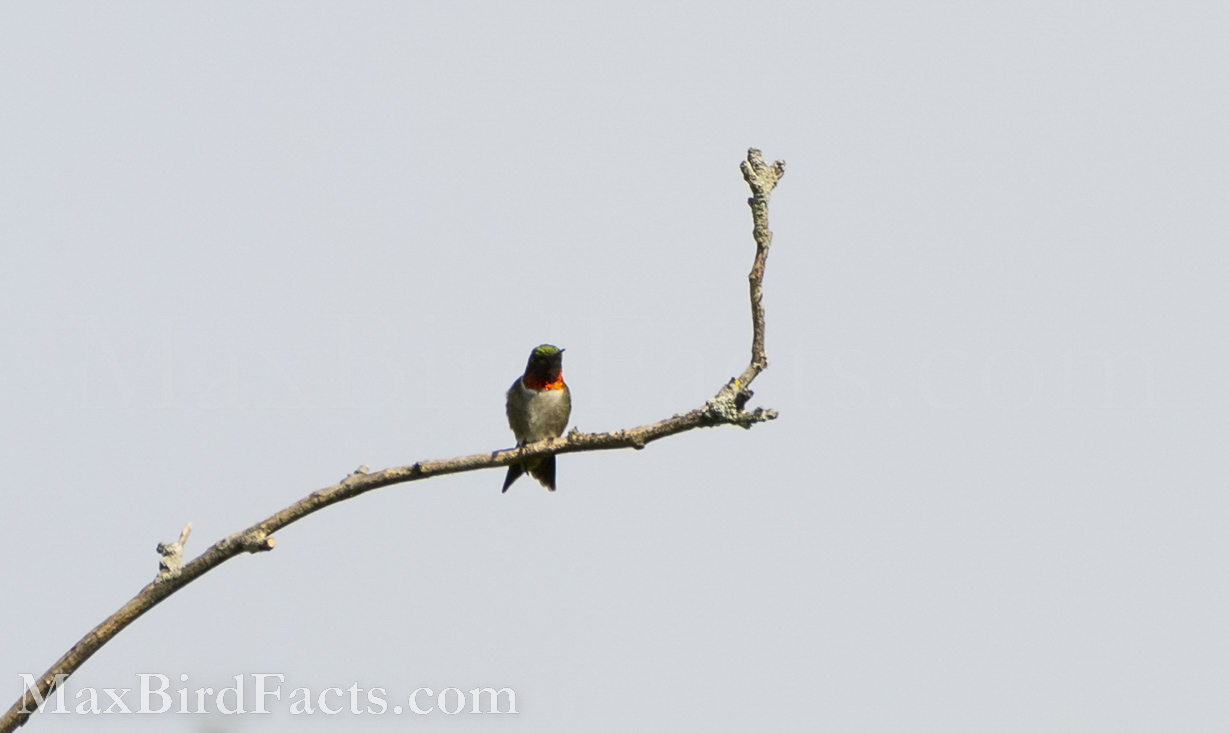
11. Ruby-throated Hummingbirds have a forked tongue that wraps around their skull.
The hummingbird tongue is a fascinating piece of evolution. The tip of a Ruby-throated Hummingbird’s tongue is split into a fork, similar to a snake’s. However, unlike a snake, this split isn’t so the bird can taste the air. Instead, this fork allows hummingbirds to take advantage of capillary action, or when the surface tension of a liquid draws it into a narrow space.
Capillary action is vital to the hummingbird’s success because the attraction between the nectar and tongue is greater than the pull of gravity, so the bird can lap up more with each dip of its tongue. And, to ensure the Ruby-throated Hummingbird can drink from even the deepest flowers, its tongue can extend about twice the span of its 0.75-inch bill. All this length can’t fit inside the hummingbird’s beak, so it wraps around and anchors to the top of the bird’s skull.
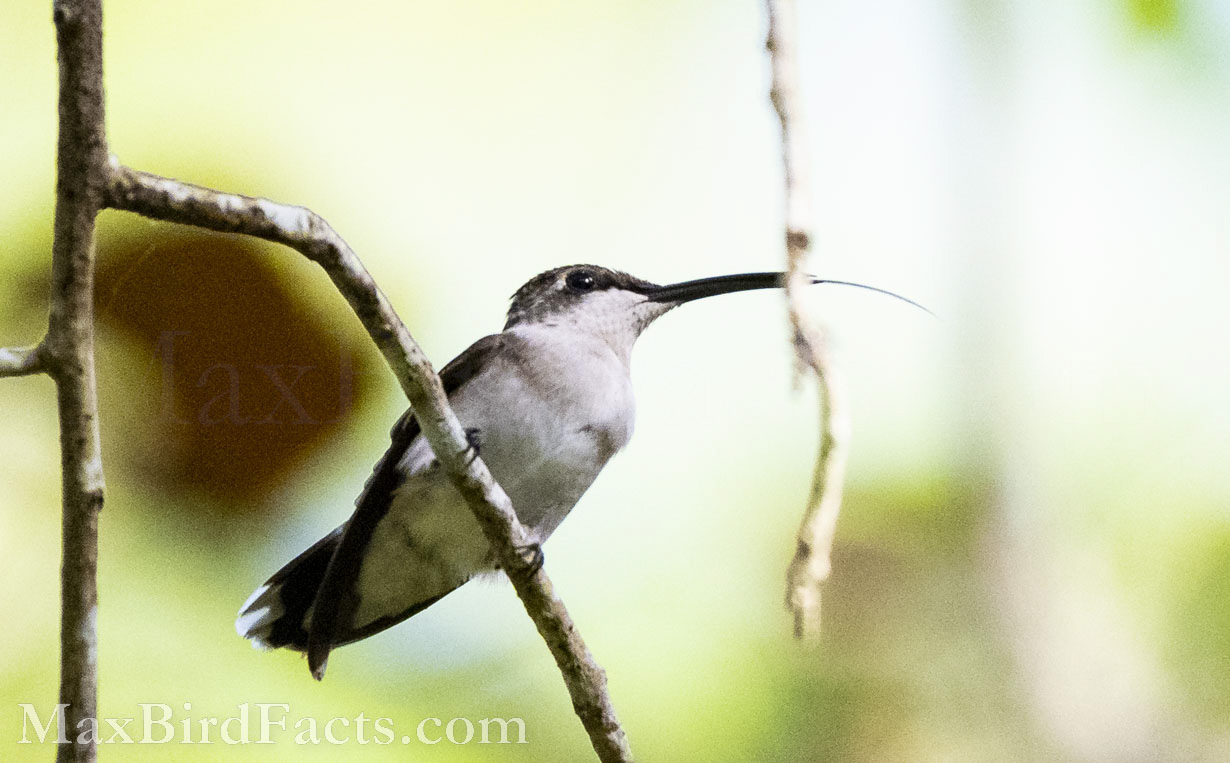
12. The Ruby-throated Hummingbird has the largest keel bone relative to size of any bird.
This might seem wrong but think about it, if such a small bird must fly so long and fast all the time just to stay alive, it must have some adaptations to help it with this charge. The Ruby-throated Hummingbird’s keel bone extends further from the body and runs more extensively along the sternum than any other bird. This extra bone allows these birds more anchor points for their primary flight muscles.
13. Ruby-throated Hummingbirds’ closest relatives, besides other hummingbirds, are Swifts (family Apodidae).
The family of Swifts, Apodidae, stems from the Greek word ápous, or footless. These agile birds earned their name because their feet have regressed to the point they can no longer perch; instead, having to use their talons like grappling hooks to hang onto walls. The Ruby-throated Hummingbird’s relation to the Swifts is apparent when looking at their feet. In flight, the hummingbird’s feet are tucked away like a plane’s landing gear. But once the bird lands, you can see its toes’ size. These feet are just large enough for the bird to perch on a branch or at the nest’s edge, but they cannot walk or hop on them. However, the hummingbird’s feet and legs are still long enough to scratch an itch on the top of its head.

14. Ruby-throated Hummingbirds are highly territorial and will defend a hummingbird feeder or patch of flowers viciously.
Because of these birds’ insane metabolism, they require vast amounts of quality food. For example, a Ruby-throated Hummingbird must eat half its body weight in nectar daily to survive starvation. Hummingbirds also eat protein-rich insects and spiders to help round out their diets of pure sugar. However, once a hummingbird has found a patch of productive flowers or a filled feeder, it will chase off any invading bird with surprising ferocity.
I’ve watched Ruby-throated Hummingbirds chase off and pluck at the tail feathers of a male Northern Cardinal with its bill. These little maniacs will ruthlessly chase off other Ruby-throats from their territory in high-speed dogfights; beaks pointed like lances at the intruder.
15. Some Ruby-throated Hummingbirds stay in year-round territories here in Florida.
95% of Ruby-throated Hummingbirds do indeed leave North America during their fall migration across the Gulf of Mexico. However, some birds stay in the Florida peninsula’s southern end. It’s not entirely understood why these residents stay in North America. Still, I think it could be strongly influenced if a bird found a reliable food supply in a safe environment.
Regardless, their more well-traveled relatives return from their vacations around March, with males coming about a week before females. This extra time allows the male Ruby-throated Hummingbirds time to find suitable flowers and feeders to build up their territory for the breeding season.
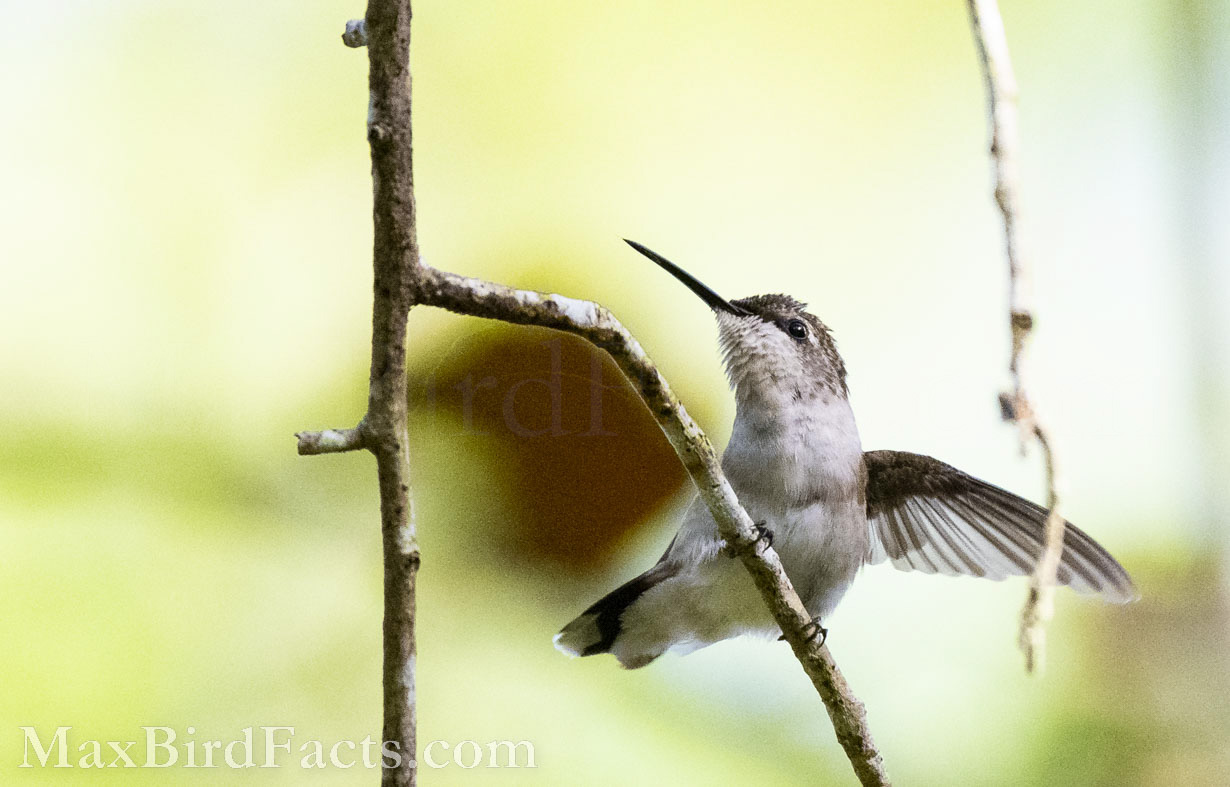
I hope you learned at least a few new facts about the gorgeous Ruby-throated Hummingbirds that buzz around our flower gardens and feeders! Please let me know what the most fascinating or shocking fact you learned about in the comments below.
If you have ideas or suggestions for topics you would like me to write about in the future, feel free to leave a comment below or shoot me an email!
Get Outside & Happy Birding
Max
